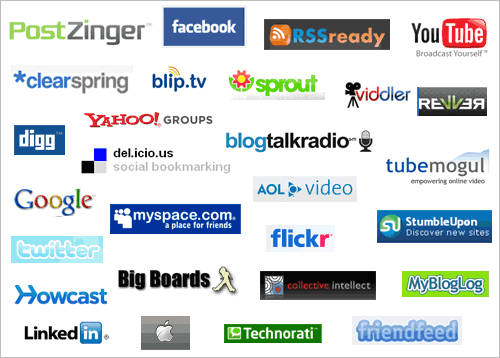
Think social media doesn't have an impact on your company? Think again. And yes, that's true even if your business is B2B.
Forrester just published its third annual Social Technographics Profile. Some of the highlights can be found on the Groundswell website or you can purchase the full report from Forrester, entitled "The Broad Reach of Social Technologies.” The company gathered and analyzed data from across North America, Europe, and Asia.
A few of the stats that popped out at me are these:
- More than 4 out of 5 adults participate in social media, of which the most active group is Spectators.
- Participation among those under 35 is nearly universal (less than 10% Inactives),
- Even among those 55 and over, about two-thirds are participating.
Additionally, RightNow just released a study RightNow Multi-Channel Contact Center Benchmark Report. Although its study focused predominantly on phone and email support stats, one social media-related result caught my eye.
In most companies, one person is generating (service-focused) content.
Companies need a Social Media Strategy
Your prospects and customers are actively looking to find out information about your company, products and services – whether you’re out there participating or not. Oh, and some of your competitors are likely participating as well.
This means your company needs a Social Media Strategy as part of its overall corporate strategy.
People influences
Social media can impact multiple departments in companies – marketing, sales, and customer service are three that come to mind.
 Don’t just consider external business objectives, though. Social media can help internal teams to collaborate as well, although it might be via a private channel.
Don’t just consider external business objectives, though. Social media can help internal teams to collaborate as well, although it might be via a private channel.
Thus, make sure your social media strategy is multi-tiered to meet the business needs of all impacted functional areas.
As part of your strategy, you need to consider what is the right social media mix for your company, whether it entails participating in popular channels like Facebook, Twitter, niche channels or developing your own public and private communities.
And note, social media needs for B2C businesses will differ than those needed for B2B.
Be sure to consider the people resources needed to implement and maintain your strategy.
Technology influences
Once you’ve built your strategy and understand the soft resource requirements like people, you’ll be ready to consider what is the right technology to support your strategy.
Your company will need to implement the technology solutions that will allow you to:
- Outreach in ways that will support your strategy. For example, if you’re building your own community, should you use a solution like Jive, Mzinga, GroupSwim, or some other community solution.
- Integration requirements from your selected social media channels back into your customer-facing solutions like your main website or into back-office systems like your CRM.
- Consider automating content generation for your knowledge base, using content created by social media participants. Doing so will move you from single source content generation, which is likely to be insufficient, to multi-source by incorporating good answers from folks like customers.
- Gather intelligence about social media activities to help you manage your business. That means moving from a CRM solution to a Social CRM (SCRM) solution.
Summary
At one point in time, email was cutting edge and used on the periphery of business before it became an essential function.
Social media participation is in a similar situation. It may not mission-critical yet and maybe it won’t ever be. It is, however, at least mission-important.

